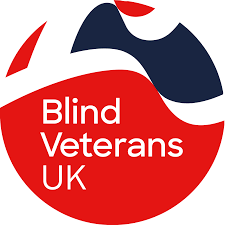Microsoft Teams: An inclusive platform keeping blind veterans connected
Robin Christopherson | 27 Jul 2022At AbilityNet, we know all about the power of technology to change people’s lives.
 For Blind Veterans UK - a charity to help those with vision loss who have served in Her Majesty’s forces - technology has always been fundamental, too. From the original Braille watch that the charity’s founder, Sir Arthur Pearson, gave to blind veterans returning from the First World War, to using accessible technology such as Microsoft Teams today.
For Blind Veterans UK - a charity to help those with vision loss who have served in Her Majesty’s forces - technology has always been fundamental, too. From the original Braille watch that the charity’s founder, Sir Arthur Pearson, gave to blind veterans returning from the First World War, to using accessible technology such as Microsoft Teams today.
As a blind person myself, it’s through Teams’ rich, accessible functionality that I can effortlessly attend and seamlessly collaborate in many (and I mean many) meetings each week. For Blind Veterans UK, the accessibility features in Teams means that the charity can induct new 'Members' much faster and keep everyone connected across the country.
How technology can boost confidence
“On 1 September 1997, I woke up in bed catapulted into a world of complete darkness. I was absolutely terrified,” says Billy Baxter, a soldier in the Royal Horse Artillery who lost his eyesight when serving in Bosnia. When he woke up that morning, his life changed completely.
The average age of Blind Veterans UK Members is 87, and they have lived most of their adult life away from computers and technology.
Billy says that despite some initial scepticism, these Members learn very quickly that technology can be a useful tool. After initial training they gain more confidence. Many elderly veterans can even access Teams calls through their existing landline phone, meaning they’re not isolated by their technology.
 Accessibility in Microsoft Teams
Accessibility in Microsoft Teams
A common misconception is that all blind people can’t see anything. In fact, 95% of blind people have some form of vision, it is just that this vision is distorted or impacted to various degrees.
As someone who is completely blind (not even detecting the difference between a bright day or the middle of the night) I am one of those completely blind users and, for me, I use speech to access Teams on my PC or phone. All the controls speak well and I have access to every aspect I need to do my job.
For those with some vision, there are numerous features in Teams including a useful zoom in/out tool, whilst the large cursor and high-contrast mode on Teams allows them to differentiate icons and controls more easily.
AbilityNet has training that can help: How to run accessible, inclusive hybrid meetings and events in Zoom, Teams and more
When combined with built-in accessibility features - such as Magnifier and Text Preferences - in Windows and iOS, Teams becomes a very flexible option for anyone with a vision impairment.
Magnifier enlarges everything on the screen and even reads text aloud, whilst Text Preferences enables users to sustain focus with increased text sizing and spacing between lines, letters, and words. It also has specific colour choices that increase contrast and focus, and lessen eye strain.
Billy says, “I can use Teams on my smartphone in two different ways, either by using the built in audio function or I can use voice commands with hand gestures. With audio, it tells you who's on the call and you really feel like you're all in the same room.”
For veterans that also have hearing loss, Teams provides automatic subtitle and text telephone options. It even offers voice control for those with an injury or disability that has impacted the use of their hands or arms.
A hopeful, inclusive future with Teams
Billy, who is now an ambassador for Blind Veterans UK, shares AbilityNet's optimism about a future that includes inclusive products such as Microsoft Teams.
“Peer support is possibly one of the most significant parts of the rehabilitation process for someone with sight loss or impaired vision. And Teams can be a key part of that process”, says Billy. “Using Teams enables people with sight loss. It gives us the eyes to see the world.”
Source: Microsoft



